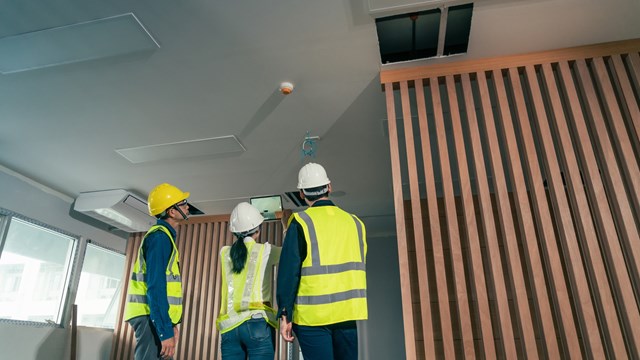Time was that a nice, spacious condo unit with a good location, a good view and several basic amenities, such a laundry room, a doorman and a gym or pool, were what buyers wanted in South Florida.
But as more buildings were constructed or renovated, and as competition became more intense for existing units, management began to offer more and more elaborate amenities as incentives for new buyers.
At the same time, some people began buying condo units as an investment and/or a second home. For these people, amenities can be as important as the building’s location.
Today, not only in the Sunshine State but across the country, you can find condo and HOA developments offering a dazzling assortment of amenities. (Interestingly, the term “amenities” seems recent—I can remember them being described as “special features” or “luxuries.”).
All the experts we spoke to pointed to a wide variety of amenities in high-end condos today. Some of these include wine cellars, putting greens, yoga rooms, Pilates, jetted swimming pools, takeout service from nearby restaurants, Zipcars, private party rooms, playrooms for young children, movie-screening rooms, indoor basketball courts, bowling alleys and even roof-top helipads.
Indeed, a resident in a prestigious condo building could easily stay indoors for an entire week, ordering in food from an upscale restaurant within the same building or next-door, having his concierge service take clothes to and from the dry cleaner, and going to the building’s basketball court, pool or gym when he or she is in the mood.
“Unique services are becoming more of the norm in the industry in efforts to promote individuality and a sense of buzz,” says Anthony D’Amato, LCAM, CMCA and the assistant director of property management for Seacrest Services, Inc. in West Palm Beach. “It’s healthy not only for promoting a community when being developed but maintaining property values by offering unique services that some of the older buildings typically do not have available. A few services that I have seen range from dog walking to personal chefs as well as a 24/7 concierge to run errands and shop for groceries. These amenities help to make the lives easier for residents and provide enhanced offerings for the community.”
“There is a new building coming up on Biscayne Boulevard called 1000 Museum—it hasn’t broken ground yet but they are going to have a helipad on the roof of the building on the 63rd floor with its own helicopter lounge area. So when that person lands they will have the same type of experience as if in a lobby,” says Sean Esteves, a community association manager with FirstService Residential in Miami. “There is another tower that’s scheduled to be finished next year called the Porsche Design Tower. It will have a car elevator so you basically drive your car up to this glass elevator and it takes you and your vehicle straight up to your unit and then you pull out of the elevator into your private garage, which is just glass walls and you can see right into your living room.”
“One condo building in Miami that has an elevator that goes from the unit directly to the garage,” says Jill Eber of The Jills, a Miami Beach broker associate and Coldwell Banker affiliate. “A lot of condos are offering private garages. Roof top pools are very popular. There have been private key elevators but they have been in existence for quite a while. I’m also seeing a lot of vertical gardens on terraces. It’s one of the more exotic features.”
This author has even heard of several buildings that offered cars to prospective buyers (although these were in New York, not Florida). This was a temporary situation in the immediate aftermath of the recession, when new buildings were going half-vacant.
Some Catch On, Some Don’t
Like everything else, some amenities catch on, while other didn’t—especially in view of the recent recession. We asked our experts about this—and while they recognize overall trends, they sometimes disagree on the details.
“Post-recession we see many communities, specifically condo and co-ops that were developed with restaurants and shops within the property that relied solely on the owners as a customer base,” says D’Amato. “When the recession hit many people were scaling back and this ultimately led to the failure of these added amenities. It really hurts the bottom line of these associations; empty commercial parcels and empty units don’t pay maintenance or rent.”
“The developers during the boom tried to market to as many people as they could so they offered a bunch of different things,” says Esteves. “What I saw were things like big theater rooms with a big Apple TV and theater seating. They didn’t get used a lot because residents would rather just stay in their own home and watch on their own big screen TV. The residents realized that they didn’t need to go to a separate room to watch a movie. The only way those rooms were getting used if the building arranged a movie night. Another thing I see whether it’s tennis or squash or racquetball courts in the fitness centers, depending on the demographic that moved into the building, if it’s an older demographic they might play squash or racquetball but this younger generation that are wealthy and moving in, they don’t seem to have much interest in those sports. So those courts usually don’t get used a lot.”
One amenity may be on the way out not because of economics but because of technology—business centers with computer stations. “A lot of these high end buildings are really big on technology and so are most of the residents. Most of them will have WiFi in their unit,” adds Esteves. “So there is no need to go to a business center.”
On the other hand, some amenities that were thought of as ultra-luxurious and high-end years ago have now become standard, although still desirable. For example, parking garages are fairly standard, as are washer-dryers within the unit in many buildings, health clubs and dry-cleaner availability.
Remember—what is considered standard changes with time. An apartment building built in 1900 might have advertised steam heat, hot and cold water and electric light as being the latest, most up-to-date conveniences.
Even though it is not an amenity, experts say that many buyers today look for a healthy reserve fund in a building because of the economic situation.
Urban vs. Suburban, and More
One area where variations in the type of amenities offered can be expected is that of urban high-rise towers vs. more spread-out associations. Suburban developments, of course, have more open space, which lends itself to separate buildings for clubhouses, nine-hole golf courts and outdoor pools.
On the other hand, urban condo buildings can offer a feature that suburban condos don’t have: Spectacular views of the city.
Experts believe that views are a premium selling point in the city and many developments have their common areas located in premier real estate within the buildings. It was also noted that most people live in the city for the experience and amenities that views deliver: Spacious sundecks overlooking the city, fitness centers and pools with lake views.
What Works and What Doesn’t?
With this bewildering array of amenities being offered, how do developers, boards and managers know which ones will work in a particular development, and which one’s won’t? There are several ways.
“Developers rely on marketing and what has worked statistically depending on the value of the property,” says D’Amato. “They will market those who fit in that specific demographic and what benefits the community long term. Typically, the majority of folks who live in the same buildings have the same wants, needs, and expectations. Depending on who they are trying to market to will play a large role in the amenities that are offered.”
“With the ultra-luxury buildings developers usually have a target market in mind. And here in Miami those properties are usually marketed to South Americans from Brazil, Argentina and Venezuela. There are a lot of cash buyers coming from these South American countries and they are looking to buy, second, third or fourth homes so they are not looking for a place to be their home on a full-time basis, they are looking for more of a resort experience,” says Esteves.
“So the condo industry in Miami is migrating toward a service oriented, service-focused kind of industry. Similar to what you’d find in nice hotels. They want service. They want attention. They’ll let us know when they are coming to town and we’ll make arrangements to have everything ready for them when they get here; fridge stocked with food, dinner reservations and transportation. Those are the amenities that really sell luxury units to buyers and that’s what they are looking for when they buy these units.”
Surveys are also a good tool in determining what new features will help to keep residents interested in amenities that are already there. A gym is a good example—surveys can reveal what types of new equipment users want, especially since many exercise rooms regularly replace their equipment every few years.
Boards themselves can also create ideas or plans and then present them at town hall meetings, where owners can come and voice their opinions.
All in all, when it comes to input about amenities, professionals value the input of people with day-in, day-out housing-related activity—managers, brokers, board members--more so than academic “armchair experts” who aren’t out there in the community on a regular basis.
Raanan Geberer is a freelance writer and a frequent contributor to The South Florida Cooperator. Staff writer Christy Smith-Sloman contributed to this article.







Leave a Comment